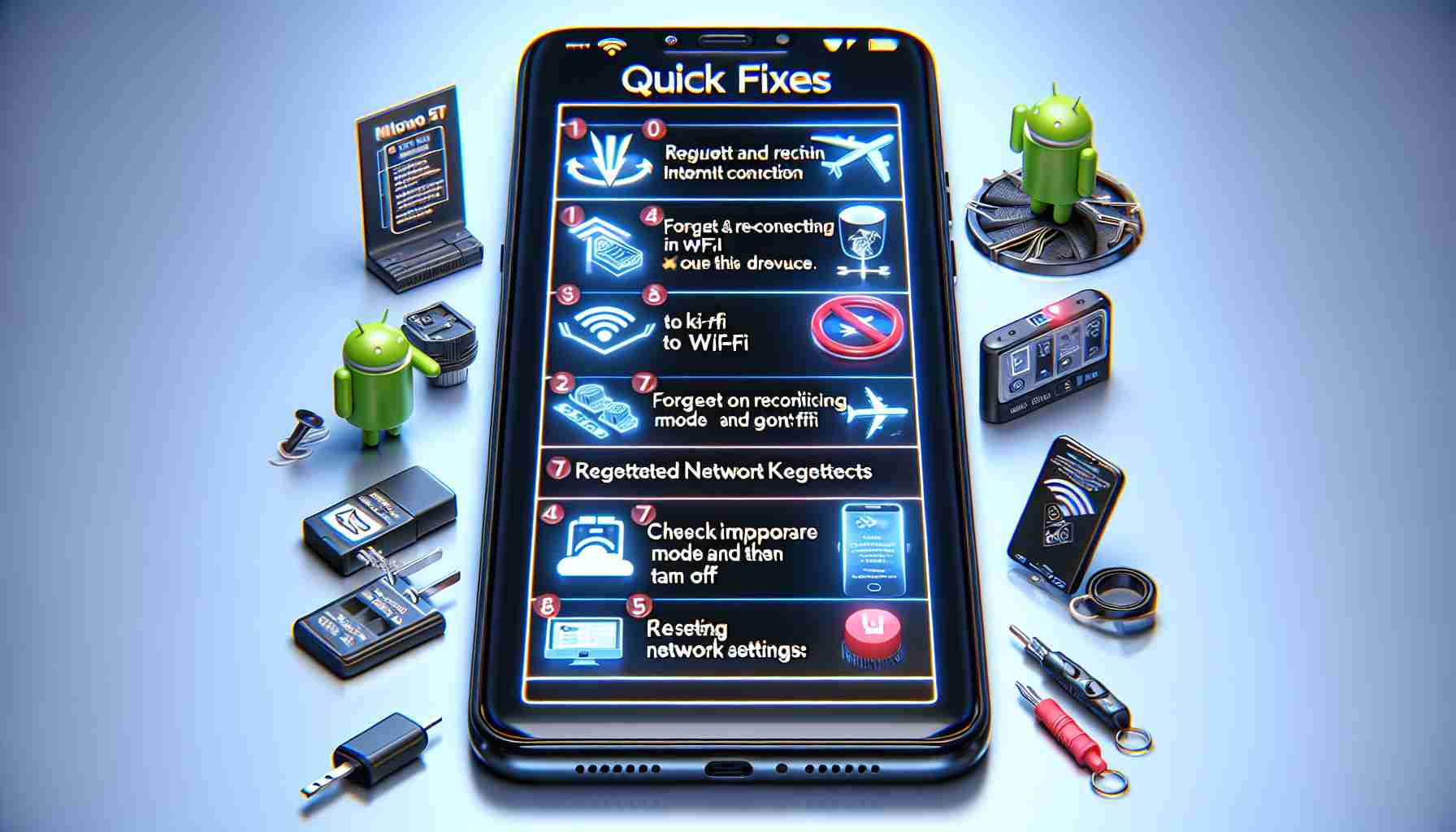If your Android phone is presenting the daunting “No Internet Connection” message, don’t rush to buy a data booster just yet. The cause might not be the end of your data plan; it could simply be a connectivity issue. Here’s what to do if your daily data limit hasn’t been reached and you need to get back online quickly and effortlessly.
Restart Your Smartphone
It might seem trivial, but often a quick restart can solve various technical issues, including internet connectivity problems. Turn off your device, wait a few minutes, then switch it back on. This could clear temporary glitches and refresh network connections. Alternatively, toggling airplane mode on and off can also serve to restart network connections without rebooting the phone.
Ensure Your Phone and Apps are Up-to-Date
Obsolete software can lead to performance issues, including sluggish network speeds. Keeping your phone’s software updated ensures you have the latest bug fixes and enhancements, sometimes including improvements to internet connectivity. Regularly check for software updates in the settings menu and make sure your apps are also updated to their latest versions for optimal performance.
Clear App Cache and Browser Data
Just as with PCs and laptops, the cached data on phones from apps and the Android system itself can accumulate and potentially slow your internet speed. Clearing the cache for your web browser and frequently used apps may improve performance. Also, close excessive background applications and browser tabs to prevent unnecessary data usage.
Monitor Data Usage and Background Apps
Heavy data consumption or too many background apps can throttle your network speed. Check your data usage in the settings menu to see if any particular app is consuming more data than usual. Additionally, you can restrict background data for certain apps in the settings, allowing you to prioritize network speed for the apps you use most often.
Reset Your Network Settings
After trying the previous tips and still facing issues, consider resetting your network settings, which can often resolve lingering problems. To reset, navigate to the settings menu and find the “System” section. Choose “Reset” and select “Reset Network Settings.” Note that this will remove saved Wi-Fi networks and Bluetooth connections, so you’ll have to reconnect afterwards.
Set Up Your Phone as a New Device
If none of the above solutions work, you might consider setting up your phone as a new device. This involves performing a factory reset that will erase all your data and settings, so make sure to back up important information first. After the reset, you can set up your phone from scratch which may solve any underlying system issues affecting internet connectivity.
Check for Hardware Issues
If the connectivity problem persists, investigate for potential hardware issues. Problems with the phone’s antenna or SIM card could be the culprit. Checking the SIM card for any visible signs of damage or trying the card in another phone can help determine if the SIM card is the issue. If you suspect a hardware problem, contacting the manufacturer’s customer service or visiting a professional technician might be necessary.
Judge the Quality of Your Internet Service Provider (ISP) or Carrier
Often, a weak internet connection might not be the phone’s fault at all, but rather the service provider’s. Ensure that your carrier’s service coverage is consistent in your area. If network issues are common, it might be worth considering switching to a different carrier with better coverage or service quality.
Explore Alternative Connectivity Methods
Sometimes, it may not be possible to resolve the issue quickly. In such cases, exploring alternative methods to access the Internet can be useful. This may include using Wi-Fi hotspots, tethering from another device, or employing mobile broadband solutions such as dongles.
Consider the Impact of Environmental Factors
Physical obstructions or environmental factors can interpose the signal transmission between your device and the network towers. Dense building materials, inclement weather, and being in a remote location can all influence connectivity quality. Sometimes simply moving to a different location can significantly improve signal strength.
Questions, Challenges, and Controversies
One important question that often arises is how to identify whether an internet connectivity issue is due to a phone’s hardware, the software, or the network provider. The key challenge is diagnosing the problem correctly without resorting to drastic measures like a factory reset too quickly. There’s also controversy around planned obsolescence, where it’s suspected that manufacturers may intentionally design phones to slow down or experience issues over time to encourage consumers to purchase newer models.
Advantages and Disadvantages of Resetting Network Settings
The advantage of resetting network settings is that it can resolve issues that are due to corrupt settings or glitches within the network configurations. On the downside, you’ll lose all saved networks, meaning you’ll need to re-enter passwords for secure Wi-Fi networks. Furthermore, those who aren’t tech-savvy can find it daunting to reset these settings without assistance.
For more general information about Android devices and troubleshooting, you can visit the official Android website. Remember only to visit verified resources to ensure the information you are receiving is accurate and safe.
